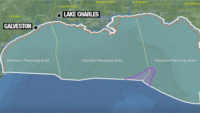India's fuel challenge is economic, political and logistical. More than 80% of India's oil is imported, and India's ongoing trade with oil-rich Iran is often the subject of political debate between the United States and other nations.
In the last year, 15 new oil prospects—nine offshore, six onshore—and eight new pools—one offshore, seven onshore—were discovered in India, opening the door to large-scale oil production there. The country also is looking to field natural gas, and soon, shale gas.
The publicly owned Oil and Natural Gas Corporation (ONGC) says that completing 19 of its ongoing offshore projects will boost the country's oil by nearly 30 million tonnes. However, offshore contractors are not easy to find in India. Recently, ONGC hired Essar Projects, a homegrown engineering/procurement/construction major, to build, connect and install three off-Mumbai platforms, one of which is among the heaviest in India.
About 200 kilometers offshore and 90 meters deep, India's farthest and deepest offshore platform was completed in April on a fast track of about 24 months. The D1 Development Project, costing approximately $193 million, includes installation of three offshore platforms and laying subsea pipelines to connect the three platforms to a floating production, storage and offloading (FPSO) structure through a pipeline-end manifold (PLEM).
The structures are connected through a network of subsea rigid and flexible pipelines and composite cables totaling about 14.5 km. This is the first FPSO project in India.
The largest platform, called D1B, will receive 35,000 billion barrels of oil per day produced by the other platforms. This oil will then be transferred for processing to the FPSO via the PLEM. The D1B deck weighs approximately 1,500 tonnes.
"This is a stand-alone platform," says P.C.B. Nair, CEO and managing director of Essar Offshore & Subsea Ltd., the offshore unit of Essar Projects. "Unlike other Indian platforms, [it has] no pipelines connecting it to the mainland."
Global Procurement
The project has entailed management of suppliers and technical experts from around the world. The jackets were fabricated at CUEL in LaemChabang, Thailand, while the three decks were made at Profab in Batam, Indonesia.
Fabrication consumed about 17,000 tonnes of steel. The jackets and decks have been transported over 3,500 nautical miles. The jackets are embedded into seabed at a depth of 90 m, and the decks are placed on the jacket to complete the platform.
Discharge arrangements into seawater needs to be cleaned and made safe, and flares are used to burn potentially toxic nitric gas. Quality checks are critical and mind-boggling, Nair explains, and are carried out by the developer and contractor at engineering and process stages. Material had to be returned or a process repeated several times in this project, he adds.
ONGC forecasts an investment of $13.5 billion for its ongoing offshore projects.





Post a comment to this article
Report Abusive Comment